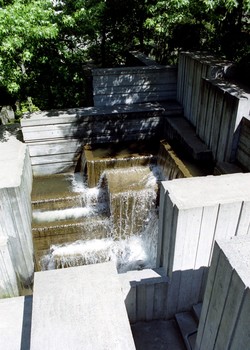How to Build a Waterfall
If you are lucky enough to have a large enough garden or are the keeper of some striking grounds, learning how to build a waterfall can enhance the impressive nature of your estate. Not only can your waterfall be a talking feature but also attract wildlife. Therefore, not only will you be doing good for the environment but impress your friends and colleagues in the process. By following these few easy steps you’ll figure out how to build a waterfall of your own.
Preparation
The first step to building a waterfall is to consider where exactly the waterfall is going to be and how tall it should be built. The waterfall will need both a top and base pool, so these are elements that will affect the placement of the waterfall also.
As the water will flow from the top pool, it will look more impressive if the water falls into a V-type shape that then expands from a central point. If it is not a level drop from the top pool to the base pool, there will need to be levels with a reserve of water at each level, in a type of zig-zag effect.
Building a Waterfall

How to Build a Waterfall
Once you have considered all these factors, you need to dig into the bank to create a more realistic effect. It is advisable to dig approximately 10 inches into the bank. Once you are happy, begin placing rocks and boulders around the crevice so that the waterfall looks more natural.
Next Step
Ensure that you line the pools correctly before filling with water. Adding rocks, boulders and plants will create a natural and attractive effect.
Fill the top pool with water and secure a hose underneath some rocks so that it is hidden but still efficiently supplying water. There will need to be a strong pump in the base pool, attached to the other end of the hose in order to create the circulation needed. Due to the generic colour of hoses, it will be easy to conceal among rocks and foliage. You will need to set the pump so that there is a circulation of just over the total content of the pond every two hours. Any more than this will be damaging to the environment.
You may have to adjust the strength of the flow of the water to ensure that this is the case.
Your Waterfall
Once you have completed these steps your waterfall is pretty much complete. In order to attain perfect flow throughout your waterfall, you will have to observe a few full circulations to ensure there are no faults that could occur.
After you have witnessed that all is running smoothly, you can add a few finishing touches. These include extra foliage to make the waterfall look aged, or perhaps introduce some wildlife such as frogs, and fish. Feel free to personalise the waterfall in any way you feel appropriate. You may wish to add some different coloured stones or even a gnome or two.
